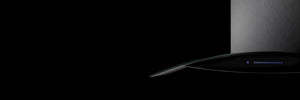 Robinhoodnz
Robinhoodnz

Imagine the dinner party scenario: Hours of work in the kitchen; hours of enjoyment around the table; hours of sleeping it off; and, when you get up in the morning, a kitchen that smells like it never happened. That's the test of a great rangehood and your new Robinhood model will pass with flying colours.
We can't give you a definitive answer to the question "which rangehood would be best for me?", because so much depends on personal taste. However, we can guide you towards the categories of rangehood that best fit your needs.
HOOD TYPES

WALL CANOPIES
This type of rangehood is positioned against a wall over your cooktop. Air is usually ducted to the outside of your house through the wall, soffit or roof, although some models offer a recirculation option as well. Wall canopies are known for their classic style and excellent performance.
ISLAND CANOPIES
If your kitchen has an island cooking area, this type of rangehood is for you. As well as looking good, island canopies have excellent extraction abilities. Air is usually ducted to the outside of your house through the roof, although some models offer an option for recirculation.


COMPACT CANOPIES
Compact canopies are positioned against the wall above your cooktop; they can be exposed to be a design feature or hidden away by being built into a cupboard. These models are well suited to recirculation type installations as well as external ducting.
TILTERHOODS
A tilterhood rangehood is built into the area above your cooktop; the lights and motor operate automatically when the hood is pulled open. These models offer a recirculation option, for when ducting to the exterior of the house isn’t possible.


SLIDEOUT RANGEHOODS
A slideout (retractable) rangehood is built into the area above your cooktop; the lights and motor operate automatically when the slider is pulled open. These models offer a recirculation option, for when ducting to the exterior of the house isn’t possible.
POWERPACK RANGEHOODS
When your kitchen designer says “hide it away”, an integrated rangehood is the way to go. A powerpack rangehood, also known as an undermount, is built into the cupboard above your cooktop. Some powerpack models offer recirculation where ducting to the exterior of the house isn’t possible.

TYPES OF COOKING

SERIOUS HOME CHEF
Creative cooks need maximum extraction power so that they can sauté, chargrill and stir-fry through an ever-growing repertoire of dishes. Anything involving high heat (steaks and grills); high seasoning (curries, stir-fries); or high potential for odour (salmon and other types of fish) will permeate every room of the house unless you have a powerful rangehood on the job.
RECOMMENDED EXTRACTION POWER - 800m3 or more

AVERAGE FAMILY COOK
A family kitchen is seldom at rest. At breakfast time it’s churning out everything from bacon and eggs to incinerated toast. At dinner time, meals range from pungent stir-fries to good ol’ meat and steamed veggies. When your kitchen is about high productivity and fast turnaround, you can’t skimp on extraction power.
RECOMMENDED EXTRACTION POWER - 700m3 or more

RELUCTANT COOK/REHEATER
For some people, a kitchen is a just kitchen - not a means of self-expression. Often nothing gets cooked because you’d rather eat out. If your cooktop is mostly used for reheating, boiling and steaming, with maybe the occasional dash of high heat frying, you can choose to have a lower level of extraction power. However, if you just love the look of a canopy hood, don’t let us stop you!
RECOMMENDED EXTRACTION POWER - 500m3 or more two bends, choose the highest extraction level you can afford.
Maintenance

Rangehood care
Powder-coated and stainless steel surfaces of your Robinhood rangehood should be regularly cleaned with a clean, damp cloth (washable micro-knit cleaning cloths are ideal).
Specialised stainless steel cleaners and spray on cleaners are safe, but avoid using regular abrasive cleaners because they could damage the surface.

Filter cleaning for ducted rangehoods
If your rangehood is ducted (air is expelled out the wall or roof), the micromesh filter needs to be cleaned at least once a month - more often if you regularly cook with oils, butter, garlic and spices.
Clean the filter gently with a dishwash brush in a sink full of hot water and detergent; alternatively, you can put your filter through the dishwasher. Some discolouration of the filter frame may occur if washed in the dishwasher.
You should also clean the area that becomes visible when you remove the filter. This is best done with spray-on cleaner and a sponge or paper towels. Always disconnect the power supply first.
Do not use the hood without filters.

Filter maintenance for recirculating rangehoods
If your rangehood recirculates air through a special charcoal filter, you will need to replace the filter regularly.
We recommend replacement every two to four months, depending on how much cooking you do. Replacement filters are available from Robinhood stockists.
Fully saturated charcoal filters can become a barrier to air movement and limit the performance of your rangehood; they can also be a fire danger when laden with grease.
You should also clean the area that becomes visible when you remove the filter. This is best done with spray-on cleaner and a sponge or paper towels. Always disconnect the power supply first.
Replacing lightbulbs: The light bulbs on all Robinhood rangehoods are easily replaced. Instructions can be found in the operating manual that came with your rangehood. Replacement light bulbs can be purchased from specialist lighting stores. It's a good idea to bring the expired bulb with you, so that you can obtain an exact match.


